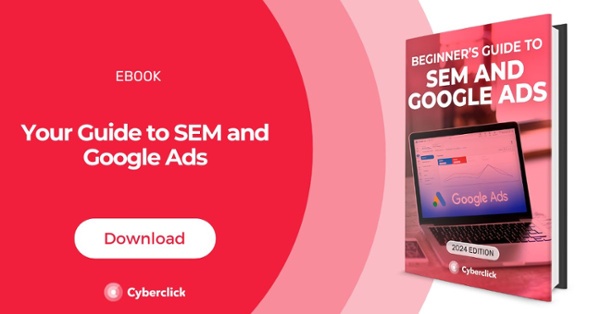Whether it's traditional advertising or digital ads, the truth is that all effective advertising campaigns share several common characteristics. Some examples of effective advertising characteristics are making sure your ads are persuasive, targeted, creative, ethical, among others. Let's take a more detailed look into the 10 most important characteristics of effective advertising.
What Makes a Good Advertising Campaign?
As consumers, we’ve all seen our fair share of ads that wow us, and ads that, well, flop. So what makes a good advertisement? There are 10 characteristics that make for a strong ad or campaign:
1. It’s Promotional
At its core, advertising is a form of communication that aims to publicize a product or service and encourage sales. By nature, good advertising is promotional.
While some may refer to advertising as "propaganda", they are two separate concepts. Propaganda seeks to influence a population's ideology and ways of thinking, while advertising focuses on influencing purchasing habits. A good advertisement is promotional in nature, though this promotion can be more or less subtle.

2. It’s Persuasive
To achieve their main objective of increasing sales of a certain product or service, effective ads must convince consumers that the featured product or service is better than a similar offering from a competitor. Persuasive advertising assures that a product can solve a consumer’s need or improve their life in some way.
Advertising employs a variety of tactics such as appealing to consumers' emotions, winning their trust with authoritative arguments, or using logical reasons to justify the purchase of a product. Remember those lessons about ethos, pathos, and logos from high school? Effective advertising uses these tools all the time.
This can be seen in the campaigns that the diamond corporation, De Beers, has launched over the years, in which they aim to convince people that diamond rings are essential to an engagement.

3. It’s Part of the Company’s Overall Marketing Strategy
Behind every campaign, there is a lot of strategic thinking involved. Advertising always aligns with a specific marketing objective that connects with the global interests of a brand or company. A strong advertising strategy should be framed within the general marketing plan, like in Nike's "Just Do It" campaign. This succinct tagline is memorable and fits with Nike's image as a brand that propels both professional and amateur athletes to push to achieve their goals.
4. It’s Targeted
In the past, advertising relied on mass media such as radio and television to reach as wide of an audience as possible. Effective advertising in today’s world requires highly targeted and segmented audiences.
Every brand has a buyer persona or ideal customer profile they are trying to attract. The more focused your advertising is on a particular audience, the more effective it can be. The content of your ads should be specially designed to appeal to the wants and needs of your audience. Ads do not work well if they are not trying to appeal to a specific type of person.

5. It’s an Investment
Advertising campaigns require an investment of time, resources, and of course, money. Generally, the channel issuing the advertisements charges a certain amount in exchange for its dissemination.
A good ad campaign will increase the company's profits, and this should exceed the invested cost. To understand the relationship between costs, advertisers measure the campaign’s ROI (return on investment). A positive ROI indicates that the advertising campaign has been a success. One way to get a better idea of what will make a successful campaign is to A/B test your ads. This allows you to test different variables and variations of your advertisements and see what produces the best results.
6. It's Original
It’s no secret that advertising suffers from market saturation. Consumers are exposed to hundreds of ads a day in different formats, and many don’t even pay attention to them. Therefore, effective advertising stands out from the competition by using unexpected formats and resources.
Every year, Spotify gives users a personalized year-in-review that highlights their most played songs, artists, and genres. This clever use of personalized data creates excitement and drives engagement, with users eagerly sharing their results on social media. The campaign has become an annual tradition, tapping into the power of social sharing and giving users a reason to reflect on their musical tastes in a fun and original way.
7. It’s Creative
Funny videos, shocking images, unforgettable speeches, catchy jingles, etc. Effective ads use creativity to stand out and make a brand immediately identifiable or memorable. The best creative ads manage to surprise users, encourage them to take action, and become instantly memorable, all while remaining faithful to the principles of the brand. A great example of this is Old Spice's viral ad campaign, "The Man Your Man Could Smell Like". This campaign successfully used humor to get the point across. Take a look!
8. It’s Consistent
Truly great ads stay consistent with the core of the brand and the values associated with it. Generally, a single ad can’t achieve this goal, especially in a saturated environment. Therefore, a key aspect of advertising is consistency.
Ideally, each consumer within the target audience should receive enough impact to remember the brand and its message, but not so much that it becomes annoying. It is also interesting to consider that impacts can be repeated through the same medium. For example, watching the same TV commercial several times or transmitting the same message by adapting it to different channels (cross-channel or multichannel advertising).

9. It’s Personalized
Personalization is an increasingly important trend and it’s getting easier than ever. Truly effective ads are increasingly personalized to the characteristics and needs of a particular user. For example, you can use marketing automation to send emails with personalized content, like the one below from Sephora. These kinds of emails directly address your customers' wants and needs and provide them with offers and information that is relevant to them. Remarketing is another great way to use personalized ads, especially for ecommerce or retail stores.
Customized experiences, offers, and interactions allow brands to build connections with their customers and build loyalty.

10. It’s Ethical
Because of its persuasive power, advertising should be controlled to prevent misleading information or unethical campaigns. While several public bodies regulate the ethical aspect of advertising, it is also essential that advertisers and agencies take responsibility. In the end, honest advertising reflects the values of the advertiser, contributes to improving a brand's image, and is beneficial in the long run. If consumers feel that they can trust your brand and that your values align with theirs, they are much more likely to purchase from you, tell their network about your brand, and become loyal customers.
.jpg?width=277&height=531&name=patagonia%20(1).jpg)
11. It's Timely
Good advertising is relevant to the moment and reflects the current cultural, social, or seasonal context. A successful ad campaign takes advantage of trends, current events, or a particular time of year.
Ads tied to holidays like Christmas or special events like the Super Bowl often resonate with audiences due to their timely nature. Think of how brands like Coca-Cola launch seasonal campaigns that make people feel connected to the time of year.
12. It's Interactive
In today’s digital age, engagement is a huge part of a campaign’s success. Interactive ads encourage consumers to participate, whether through social media challenges, contests, or personalized experiences. Many brands, like Procreate, encourage users to participate on social media.
13. It’s Emotionally Engaging
The best advertisements tap into emotions, whether that’s humor, joy, nostalgia, or even sadness. Emotional ads tend to be more memorable and effective in influencing behavior. Think of the emotional power behind ads like Google’s “Year in Search.” These ads build an emotional connection that strengthens the consumer's relationship with the brand.
14. It’s Memorable
A great ad doesn’t just get your attention—it sticks with you. Whether through a catchy slogan, memorable imagery, or a unique concept, successful ads are those that stay in your mind long after you’ve seen them.
Apple's "Think Different" has remained relevant and talked about for more than a decade. Ads like this one are instantly recognizable and stand the test of time.
15. It's Fun
Sometimes, the most successful ads are the ones that just make people smile. Humor and playfulness can make an ad feel less like a marketing tactic and more like a fun experience. A funny ad can break through the noise and create positive associations with a brand. A few years back, for instance, Amazon created a Super Bowl commercial that would forever change how people viewed Alexa. The ad was called "Alexa's Body."
5 Metrics to Measure the Effectiveness of Advertising Campaigns
Below are some important metrics to help you monitor the success of your advertising campaigns. This is not an exhaustive list, but these are some key metrics to help get you started!
1. Traffic Sources and Channels
When it comes to paid traffic sources, some will always be more effective than others. It's up to you to figure out which ones work the best for your business! This often depends on where your audience spends time online.
2. Click-Through Rate
You may already be familiar with click-through rates. It is the ratio of clicks to impressions for an ad campaign and is often used to measure the success of an ad campaign or an email marketing campaign.
3. Conversion Rate
This is the most important metric of your campaign because it tells you the percentage of users who completed a certain action on your website. The action can be anything from filling out a form to signing up for a free trial of your product or service. Conversion rate optimization is also something that can be worked on to improve results.
4. Retention Rate
Retention rate measures how many of your customers you have managed to retain over a certain period. It typically equates to a person or company using your product or service more than once a day, week, month, etc.
5. Social Metrics
Lastly, we have social media metrics. Social media is one of the most important tools for brands when it comes to running ad campaigns. Indicators like the number of shares, views, likes, comments, and so on help you understand how your ad campaign is performing.
What are 5 expectations of effective advertising copy?
Effective advertising copy should grab attention with a clear, engaging headline, highlight a strong value proposition, and speak directly to your target audience. It should also include a persuasive call-to-action and use emotional appeal or storytelling to connect with consumers and drive results.
What makes an ad effective or ineffective?
An ad's effectiveness hinges on its ability to clearly communicate a compelling benefit that resonates with the target audience. Effective ads often amplify positive emotions, making viewers like the ad, its message, and the brand. In contrast, ineffective ads may fail to convey a clear benefit or to connect with users on an emotional level, resulting in a weaker impact.
What makes an ad unethical?
Unethical advertising involves practices that deceive, mislead, or manipulate consumers. Examples include false advertising, bait-and-switch tactics, hidden fees, and the exploitation of vulnerable audiences. These ads can harm consumer trust and may lead to legal consequences.
What is the best indicator of advertising effectiveness?
Key indicators of advertising effectiveness include ROAS, ROI, conversion rate, customer acquisition cost (CAC), brand awareness, CTR, and engagement metrics. These help measure financial success, audience interaction, and brand impact, providing a comprehensive view of campaign performance.
What is the AIDA model of advertising?
The AIDA model outlines four stages of the buyer's journey: attention, interest, desire, and action. Marketers use this framework to design strategies that capture attention, build interest, create desire, and prompt action, ultimately guiding consumers toward making a purchase.
Inbound Marketing & Content Strategist en Cyberclick. Experta en marketing online, gestión de contenidos, estrategia en redes sociales, y creación y optimización de campañas en social ads.
Inbound Marketing & Content Strategist at Cyberclick. Expert in online marketing, content management, social media strategy, and creation and optimization of campaigns in social ads.






Leave your comment and join the conversation